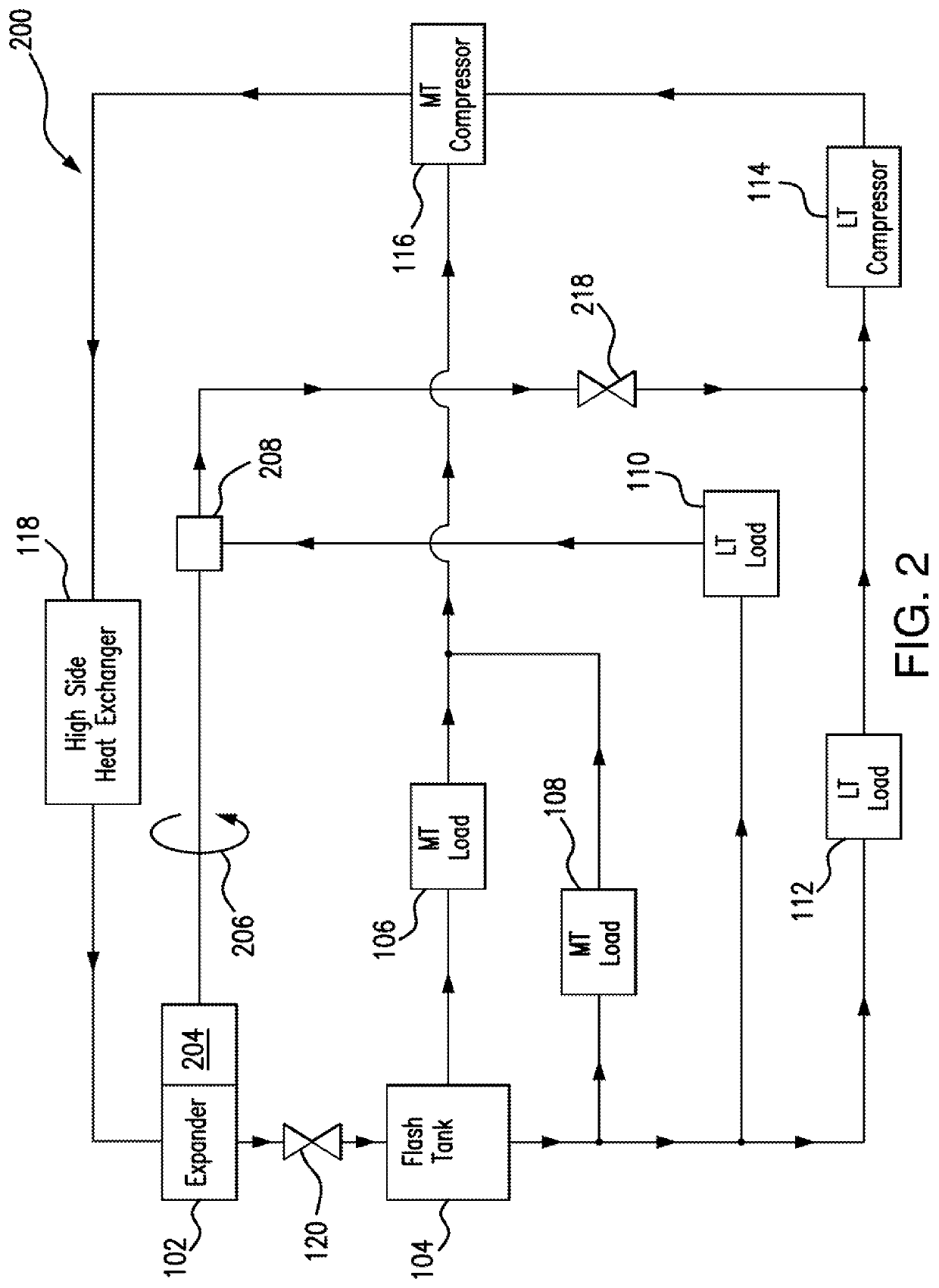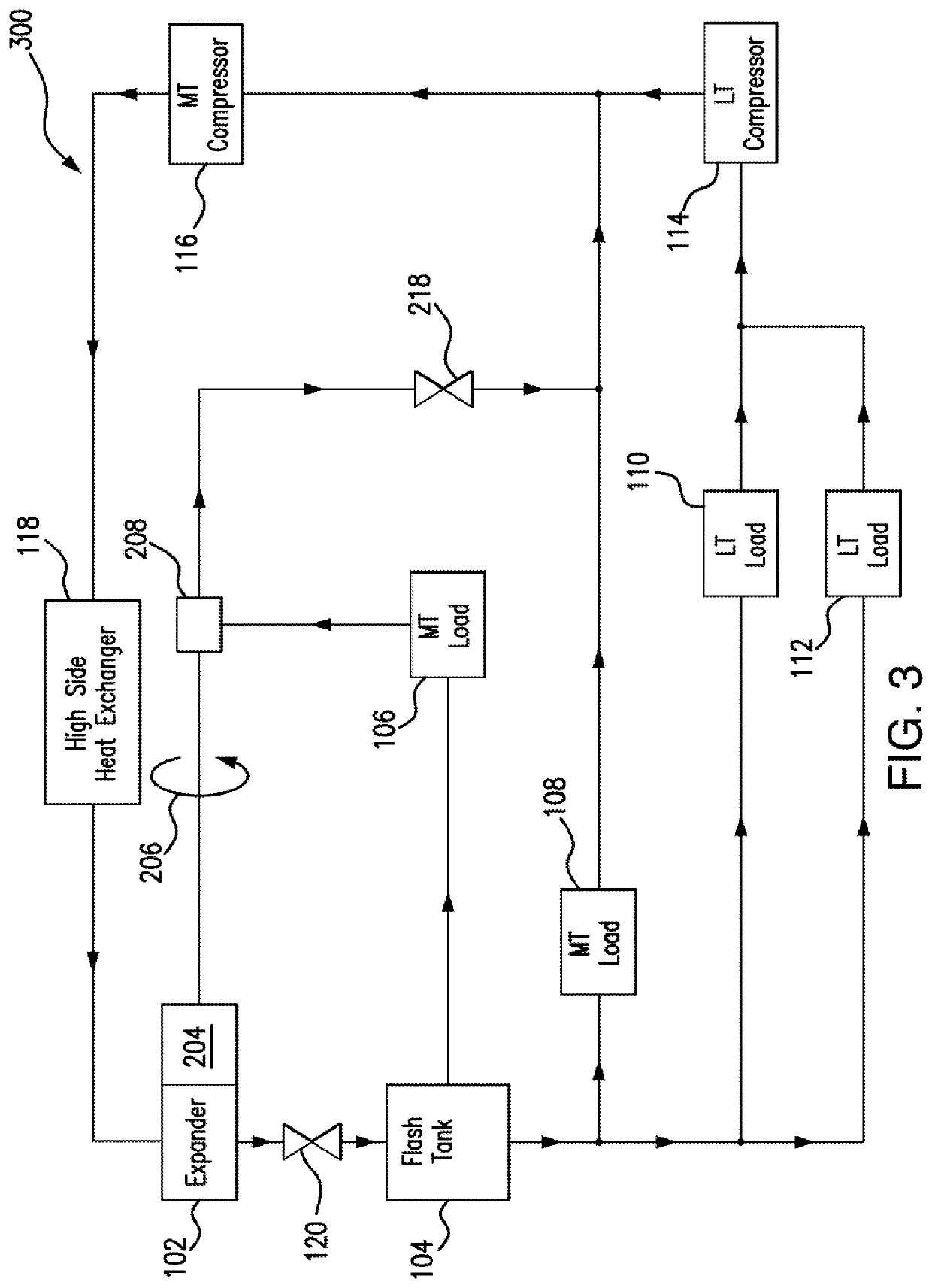Cooling System
a technology of cooling system and cooling chamber, which is applied in the direction of refrigeration components, mechanical equipment, light and heating equipment, etc., can solve the problems of simple loss of energy, process instability, and inability to use the energy released, so as to reduce the pressure of refrigerant, increase the suction pressure, and facilitate the removal of high-side heat exchangers
- Summary
- Abstract
- Description
- Claims
- Application Information
AI Technical Summary
Benefits of technology
Problems solved by technology
Method used
Image
Examples
Embodiment Construction
[0016]Embodiments of the present disclosure and its advantages are best understood by referring to FIGS. 1 through 5 of the drawings, like numerals being used for like and corresponding parts of the various drawings.
[0017]Refrigeration systems cycle refrigerant to cool spaces, such as residential dwellings, commercial buildings, and / or refrigeration units. Typical refrigeration systems include flash tanks, loads, compressors and a high side heat exchanger. The flash tank stores refrigerant, which is first cycled through the loads. The loads use the refrigerant to cool a space proximate the loads by absorbing heat. Thus, the refrigerant leaving the loads is warmer than the refrigerant entering the loads. The refrigerant is then directed to the compressors. The compressors compress the refrigerant to concentrate the absorbed heat so that the high side heat exchanger can more easily remove the heat from the refrigerant. The refrigerant next cycles through the high side heat exchanger, ...
PUM
 Login to View More
Login to View More Abstract
Description
Claims
Application Information
 Login to View More
Login to View More - R&D
- Intellectual Property
- Life Sciences
- Materials
- Tech Scout
- Unparalleled Data Quality
- Higher Quality Content
- 60% Fewer Hallucinations
Browse by: Latest US Patents, China's latest patents, Technical Efficacy Thesaurus, Application Domain, Technology Topic, Popular Technical Reports.
© 2025 PatSnap. All rights reserved.Legal|Privacy policy|Modern Slavery Act Transparency Statement|Sitemap|About US| Contact US: help@patsnap.com



